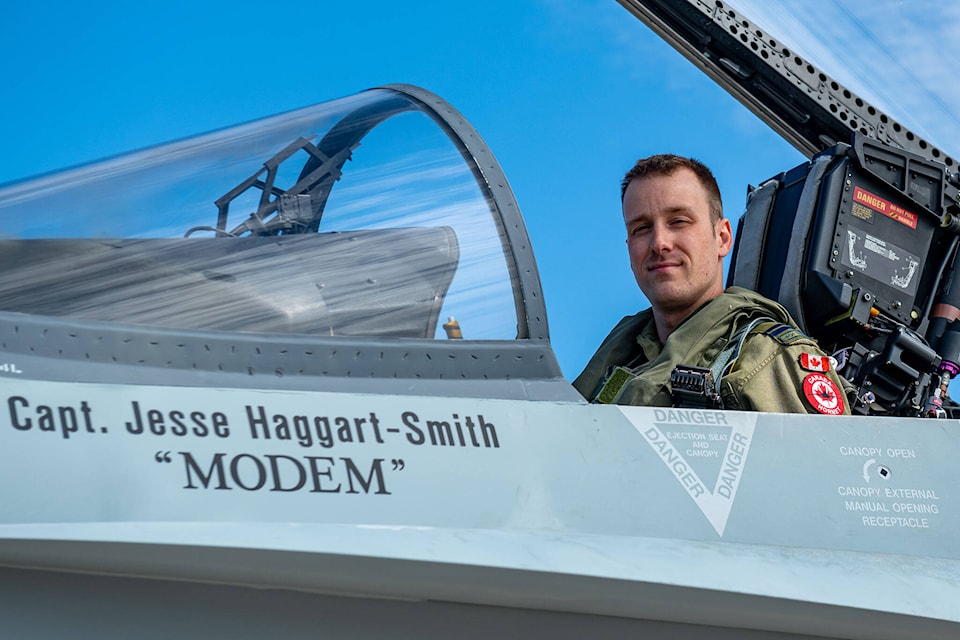Cpt. Jesse Haggart-Smith, call sign “Modem,” said it was always a dream of his to fly jets with the Canadian Forces.
In August, at age 27, he will be flying in the Abbotsford Airshow for the first time in his CF-18 Hornet. He said he hopes he can inspire young people interested in aviation the way he was inspired.
“That was the air show that I went to as a kid,” Haggart-Smith said, noting he grew up in Maple Ridge.
“Seeing the aircraft, seeing the performances there, and then getting a chance to chat with some of the pilots. It was inspiring, and I hope that I’d be able to have that same influence.”
Haggart-Smith shared with The Record his experiences training to become a fighter pilot.
He joined local Air Cadet Squadron 583 when he was 12-years old, flew his first glider at 15, joined the Canadian Forces a year later for military college, and was later selected to become a pilot.
His flight training proper started at Canadian Forces Base (CFB) Portage la Prairie in Manitoba during his third and fourth year of university, on a Grob G 120 A, a single engine aerobatic low-wing aircraft.
After passing phase one, he flew off to CFB Moose Jaw to further his training, moving from the jet-engine-powered propeller of a Harvard 2, to his first jet BA Hawk.
He moved again to CFB Cold Lake for advanced-fighter training, and has been flying the CF-18 ever since. It took him just over three years to go from junior pilot to certified on the Hornet.
Haggart-Smith said getting an early start with the cadets gave him exposure to elements of military life, and some flight training prior to signing up, but that plenty of his friends chose becoming military pilots as a second career.
“There are people who have joined at ages older than what I am right now,” he said. “They’ve gone on from professional degrees in accounting … full circle to come back to pursue their dreams.”
The hardest part of the training is not the G-Force physical tests, but the expected learning rate and how quickly you need to improve, according to Haggart-Smith.
“The military is constantly testing to see if you can learn at a quick pace,” he said. “It’s a real blending of both the physical and the mental.”
Haggart-Smith said pilots are competitive, and flying jet fighters is like a sport in some sense, applying tactics to dogfighting training and larger military exercises. They fly a couple times a week on average.
Sometimes there are dozens of aircraft all working together to achieve an objective, often in conjunction with ground forces.
For instance in 2018, Haggart-Smith was in Norway for a multinational NATO exercise where 50,000 troops from 12 countries participated.
Eventually, pilots are given a personal call sign, either based on a direct play on their name, something funny in their past, or off their personality. Haggart-Smith said they never reveal the meaning outside the squadron.
“I’d say mine probably falls more into the latter category. But that’s all you’ll get from me on that one.”
RELATED: Maple Ridge pilot to fly jet fighter for air force demo team
@portmoodypigeon
patrick.penner@missioncityrecord.com
Like us on Facebook and follow us on Twitter.
